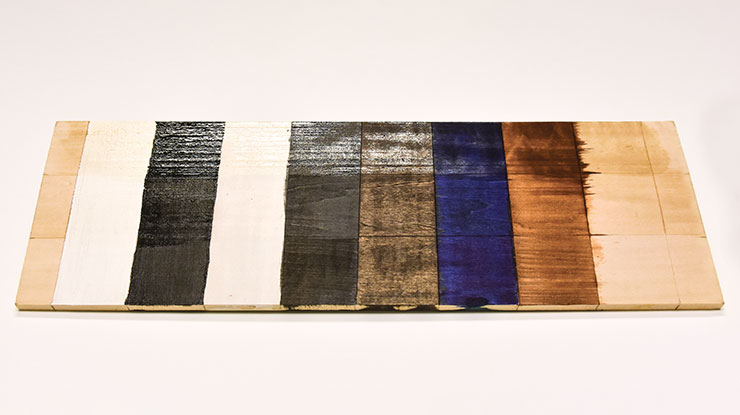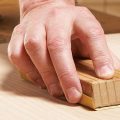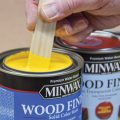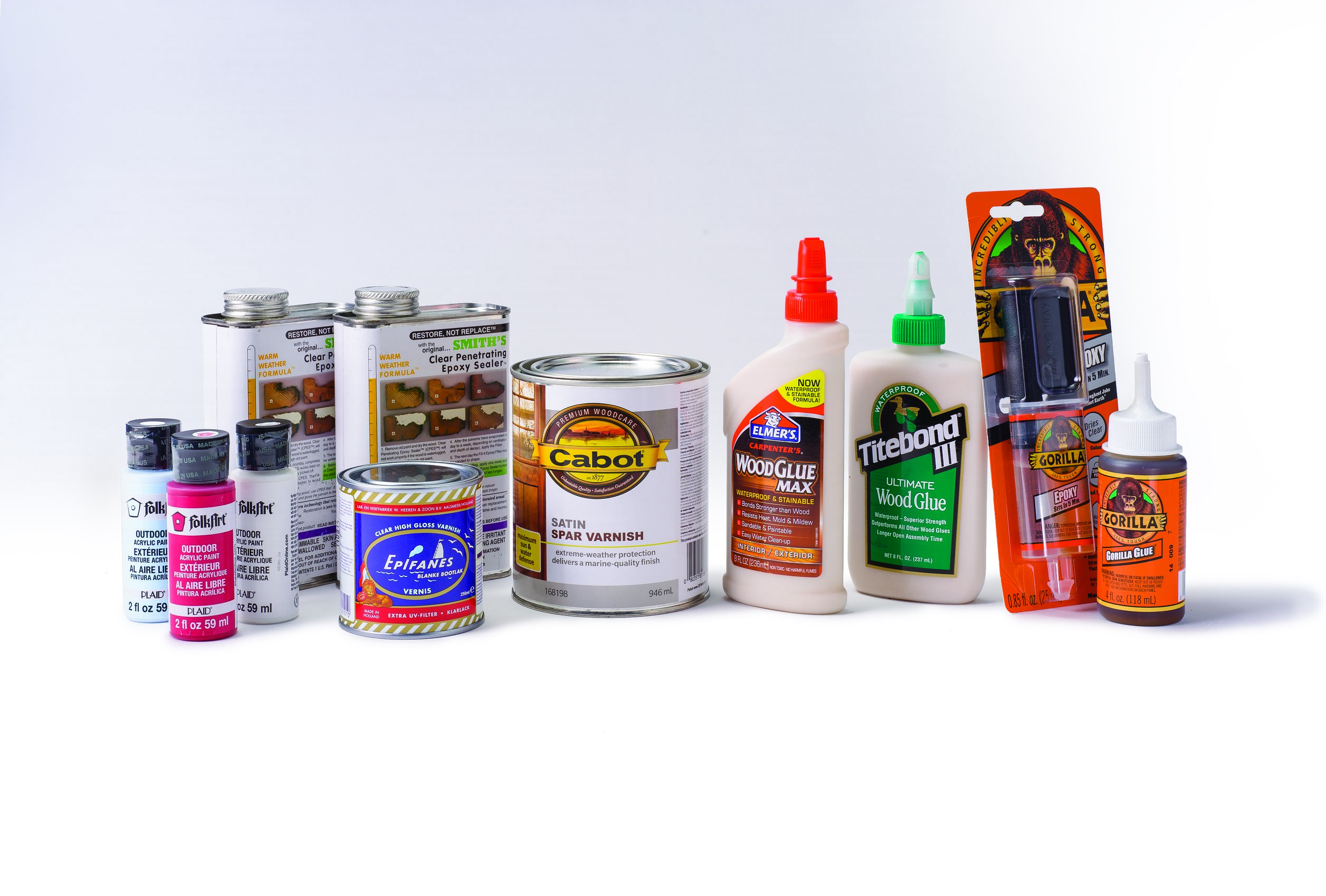For projects that will be exposed to UV rays, be sure to select the right paint, stain, and finish combination
By Staff of SSW
We’ve all experienced finishes fading or discoloring in the sun, but how much to do they actually change? To test this, we created two boards with identical paints, stains, and finishes. We photographed one immediately and stuck the other in a sunny window. After a year, here’s what we found. Once you have read through the finish results, test out what you learned by scrolling and finishing a cute crustacean.
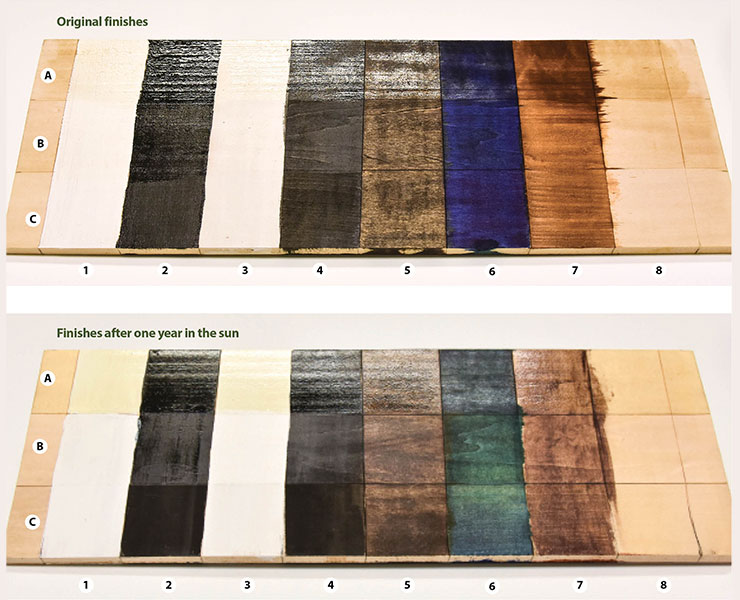
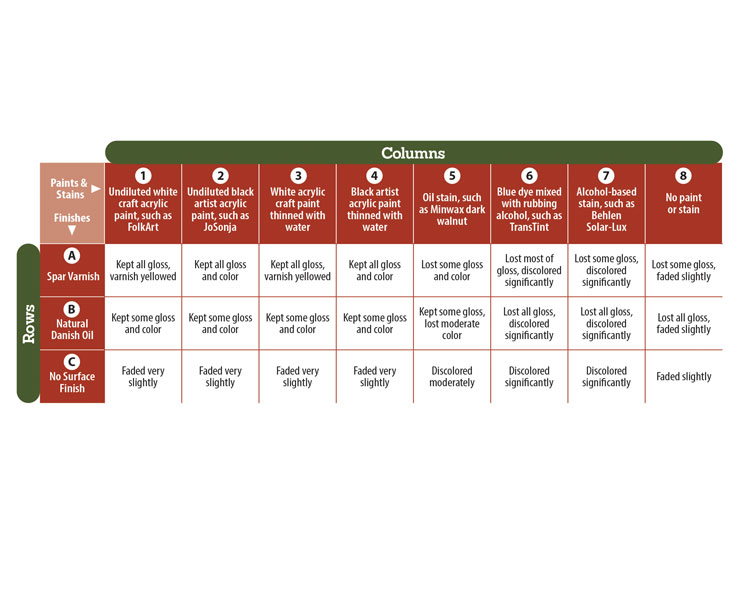
Row A: Spar Varnish
Spar varnishes are a class of tough finishes designed for outside use, like on benches or boats. The “bouncers” of the finish world, these sturdy guys contain compounds that block the ultraviolet (UV) rays that give you sunburn—and cause projects to fade.
Woodworkers love spar varnishes because they help finishes stand up better over time; they also preserve color longer. Why? Not only do UV rays make colored finishes fade, but they also cause rich, colorful hardwoods, such as purpleheart, to lose their vibrant hues. The bigger the shield against UV rays, the longer the color stays. A word of caution, though: the compounds in spar varnish do eventually break down, so even the toughest outdoor finishes need to be reapplied after a few years.
In our test, the spar varnish immediately added a yellow cast to the sections finished with white acrylic paint, which is clearly visible on the top panel. This yellow deepened noticeably on the test board that was exposed to sunlight.
Other than that, in terms of gloss and color, the sections treated with acrylic paint and acrylic paint washes and then finished with spar varnish (columns 1-4) held up well. This is because paints add color using solid pigments dissolved in a medium of some sort (usually oil, an acrylic medium, or water). Even when you thin these paints with water, the pigments resist fading.
The three sections colored with stains and dyes and then finished with spar varnish (columns 5-7) faded more noticeably than the acrylic paint sections. Column 5, finished with a traditional oil stain, held up better than dye (column 6) and alcohol-based stain (column 7). This is because traditional stain includes solid color pigments (which hold up better than dye) in addition to dye. Alcohol-based stains contain more dye than solid pigment, so they fade more than traditional stains do.
Row B: Natural Danish Oil
Danish oil, a mixture of oil finish and varnish, is a common finish for scrollsawyers. It’s easy to apply and adds a rich tone to most finishes (and doesn’t affect the color white, like the spar varnish did). But it doesn’t contain any UV-blocking compounds.
The acrylic paint and acrylic paint washes (columns 1-4) finished with Danish oil held up well, but all three stains (columns 5-7) faded significantly more than they did in Row A.
Row C: No Surface Finish
For comparison’s sake, we didn’t apply any surface finish to Row C. This means that the colors on this row were fully exposed to damaging UV rays, and it shows. Even the solid pigments in the paints faded very slightly, and the dyes and stains changed substantially compared to the control.
Conclusions
The takeaway is obvious—any finish is better than no finish, but a finish containing UV blockers is ideal for projects you plan to keep outdoors. If you don’t want to apply a heavy finish like spar varnish, use paint or traditional oil stain; dyes and alcohol-based stains don’t stand up as well when exposed to UV rays.
 |
Purchase our fall issue! Click for Fall IssueFor more articles like these, subscribe to Scroll Saw Woodworking & Crafts magazine. SubscribePlus! Get mini magazines in your e-mail between printed issues with Short Cuts, our e-mail newsletter. Subscribe to Short Cuts |


